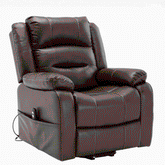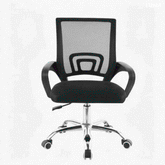Exploring South African Furniture Factories: Trends and Innovations
The Evolution of South African Furniture Manufacturing
Historical perspective and growth of the industry
South African furniture making has a rich history. It began with small workshops in the early 1900s. These shops made simple, functional pieces for local use. As the country grew, so did the furniture industry. By the 1950s, larger factories emerged to meet rising demand. They produced furniture for a growing middle class.

The industry faced challenges during apartheid. International sanctions limited growth and exports. However, local demand remained strong. After 1994, the industry saw rapid expansion. New markets opened up both locally and internationally. Today, South African furniture is known for its quality and unique style.
Technological advancements and their impact
Technology has transformed South African furniture factories. Computer-aided design (CAD) is now common. It allows for precise, efficient production. CNC machines have improved cutting and shaping. They reduce waste and increase output. 3D printing is emerging as a tool for prototyping. It speeds up the design process.
Automation has also increased productivity. Robots now handle many repetitive tasks. This frees up workers for more skilled roles. Digital inventory systems help manage stock better. Online sales platforms have opened new markets. Overall, technology has made production faster and more cost-effective.
The rise of eco-friendly practices in furniture production
Eco-friendly practices are growing in South African furniture making. Many factories now use sustainably sourced wood. They employ water-based finishes and low-VOC paints. These choices reduce environmental impact. Recycling and upcycling are becoming more common. Some makers create furniture from reclaimed materials.
Energy efficiency is another priority. Factories are investing in solar power and LED lighting. Some design furniture for easy disassembly and recycling. This helps reduce waste. Many companies now offer 'green' product lines. These appeal to eco-conscious consumers. Overall, the industry is moving towards more sustainable practices.
Key Players in the South African Furniture Warehouse Scene
Major furniture retailers and their market share
Several large retailers dominate the South African furniture market. These include:

- JD Group (Russells, Bradlows, Rochester)
- Lewis Group
- Shoprite Holdings (OK Furniture)
- Steinhoff International (Incredible Connection)
- Massmart (Game, Makro)
These companies control a significant portion of the market. They offer a wide range of styles and prices. Many operate their own warehouses and distribution centers. This allows them to manage stock efficiently. They can respond quickly to market trends.
Niche manufacturers and their specialization
Alongside large retailers, many niche manufacturers thrive in South Africa. These companies focus on specific styles or materials. For example, Vogel Design specializes in modern wooden furniture. Woodbender is known for its bentwood chairs. Houtlander creates minimalist, Scandinavian-inspired pieces.
These niche players often lead in design innovation. They cater to consumers seeking unique, high-quality items. Many collaborate with local artists and designers. This helps keep South African furniture design fresh and relevant. Some focus on sustainable or locally-sourced materials.
The role of local artisans and their contribution to the industry
Local artisans play a crucial role in South Africa's furniture industry. They preserve traditional techniques and styles. Many work with indigenous materials like Cape Yellowwood or Blackwood. Their pieces often reflect South African cultural heritage. Artisans also contribute to innovation. They experiment with new materials and forms.
Some artisans collaborate with larger manufacturers. This brings unique designs to a wider market. Others sell directly to consumers through markets or online platforms. Local artisans help keep the industry diverse. They connect it to its roots and inspire new trends.
Future Outlook for South African Furniture Warehouses
Emerging trends in furniture design and production
Several trends are shaping the future of South African furniture design:

- Modular and multifunctional furniture for small spaces
- Increased use of sustainable and recycled materials
- Blending of traditional African motifs with modern designs
- Smart furniture with integrated technology
- Customizable pieces that adapt to changing needs
In production, we're seeing a shift towards more flexible manufacturing. This allows for greater customization. It also enables faster response to trends. 3D printing may play a larger role in small-scale production. The focus is on creating unique, sustainable, and adaptable furniture.
The effect of global economic shifts on South African manufacturers
Global economic changes impact South African furniture makers. Currency fluctuations affect export competitiveness. Trade agreements open new markets but also bring competition. The COVID-19 pandemic has disrupted supply chains. It has also changed consumer habits.
However, these challenges also bring opportunities. Local manufacturing has gained importance. This benefits South African producers. E-commerce growth has opened new sales channels. Manufacturers are adapting by improving online presence. They're also enhancing their logistics capabilities.
Opportunities for growth and expansion in the African market
The African market offers significant growth potential for South African furniture makers. Rising middle classes in many African countries increase demand. South African companies have advantages in this market. They have established logistics networks. They understand African consumer preferences.
To capitalize on these opportunities, manufacturers are expanding across Africa. They're developing products suited to different African markets. Many are partnering with local retailers and distributors. They're investing in marketing to build brand recognition.
By focusing on quality, affordability, and local relevance, South African furniture makers can grow. They have the potential to capture a larger share of the expanding African market. This expansion could drive significant growth in the coming years.




